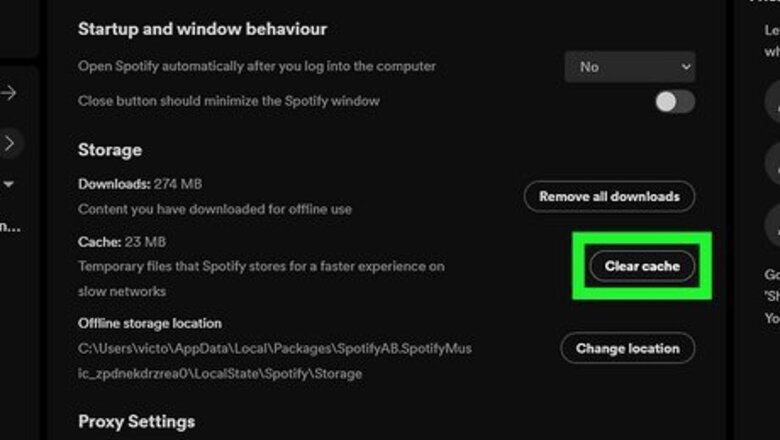
views
Clear the Spotify Cache
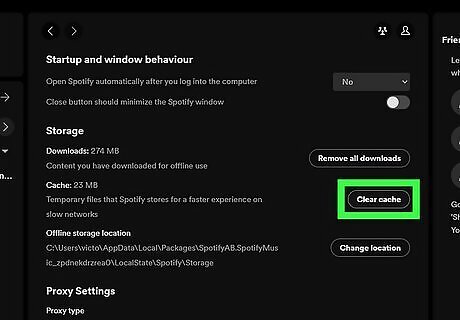
"Spotify can't play this right now" is often caused by caching problems. The cache can also be a problem if you're low on disk space and the cache is too large. Fortunately, clearing the cache is easy no matter where you're listening to Spotify: Desktop app Click your profile photo at the top-right and select Settings. Scroll down (almost to the bottom) and click Clear cache. Click Clear cache to confirm, then close and re-launch Spotify. Mobile app Tap your profile photo at the top-left and select Settings and privacy. Tap Storage. Tap Clear cache. Tap Clear cache again to confirm. Close and reopen the Spotify app.
Check Your Connection
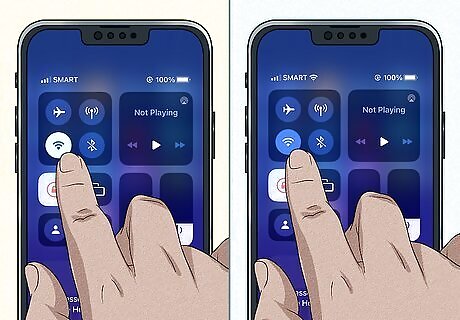
Spotify won't work if you don't have a good internet connection. This includes situations like driving and passing by 5G and no service areas, or being in and out of Wi-Fi without data. In that case, turn Wi-Fi on and connect to a reliable connection, or turn off Wi-Fi if it's unreliable to use data. If you're using an Android, disable and enable Wi-Fi by swiping down from the top of your screen then tapping the Wi-Fi logo. If you're using an iPhone or iPad, tap the Wi-Fi logo in Control Center.
Set Default Output Device (Windows)
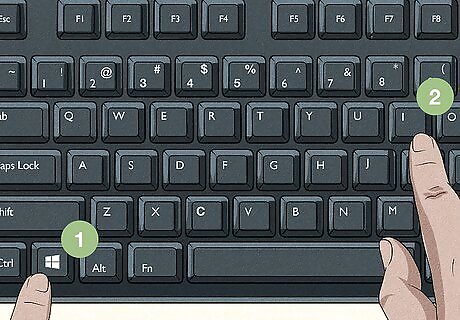
Open the Windows volume mixer. Spotify often displays the "Can't play this right now" error if the audio output isn't set properly. On Windows 11, right-click the volume icon in the taskbar, then click Open volume mixer. On Windows 10, press Win + I and select Sound > App volume and device performance. If the Spotify desktop app isn't open, open it now. You'll then see it in the list of apps.
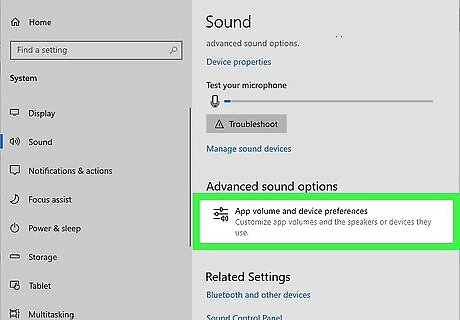
Select an output device. For example, if you want to hear Spotify from your built-in speakers (or anything connected to them), select Speakers as the Output.
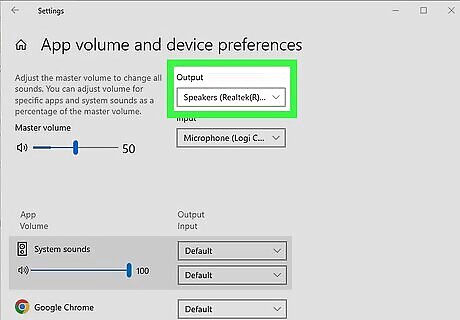
Close Spotify and reopen it. Any time you change your output device on Windows, Spotify will say "Spotify can't play this right now" until you close and restart Spotify. You may even need to restart your computer to get rid of the message.
Set the Default Audio Format
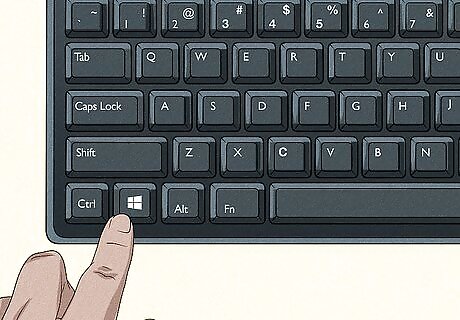
Windows 10. If you're using an incompatible audio format, Spotify can't play your songs. Press the Window key, type Control Panel, then click Control Panel in the search results. Click Hardware and Sound or Sound from Control Panel, then click Sound again if you selected Hardware and Sound earlier. Right-click your audio device and select Properties and click the Advanced tab. Select a lower sample rate and restart Spotify. If you're using a sample rate of 24-bit, 48000 Studio Quality, that might be too high for Spotify to support.
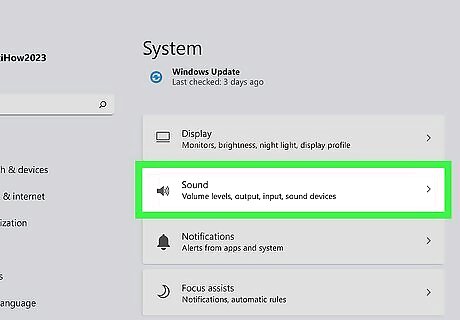
Windows 11. This step works for all computers using Windows 11. Press Win + I and select Sound. Click Speakers, select a lower sample rate, and restart Spotify to see if you can play your music without seeing "Spotify Can't Play This Right Now."

Mac. Press Spacebar + O to open Spotlight, type "Audio MIDI Setup", and click the result with a piano keyboard. Click your output device from the left menu. Choose a lower sample rate and restart Spotify.
Disable Hardware Acceleration
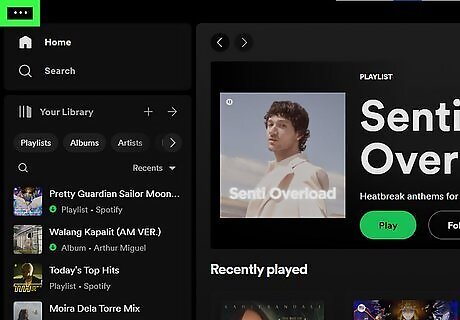
Click ••• at the top-left corner of Spotify. If you're listening on a computer, your GPU may be overworked, causing your music to stutter or not play.
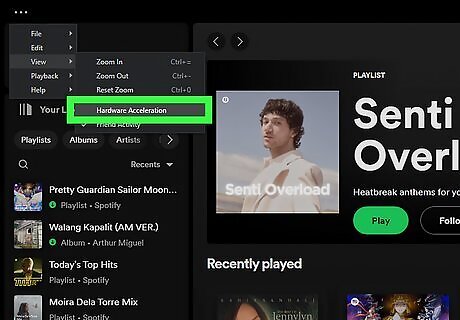
Hover your mouse over View and select Hardware Acceleration to turn it off. To turn off this feature, make sure there is no check mark next to it. This feature is enabled by default and lets your GPU take over some of the heavy lifting so you can listen to your music. If you don't see this option here, you can also find it by clicking your profile picture and selecting Settings > Enable hardware acceleration.
Update Spotify
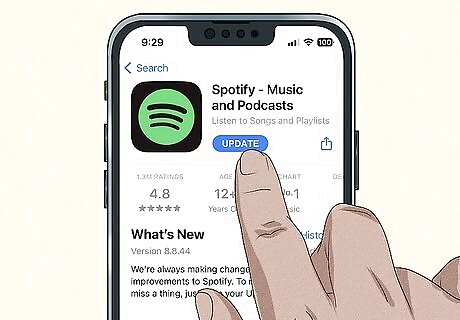
Update the Spotify app. An out-of-date app can cause many errors that appear in Spotify. Eliminate this as a possible cause by making sure your app is up-to-date on your computer, Android, iPhone, or iPad. If you're using an Android, go to the Google Play Store, tap your profile picture, tap My games & apps, and tap Update next to Spotify. For iOS (iPhone, iPad, and Apple Watch), open the App Store, tap the Updates tab, and tap Update next to Spotify. For Windows and Mac, open Spotify and open the menu to see Help > About Spotify. If you have an update available, you'll see it there.
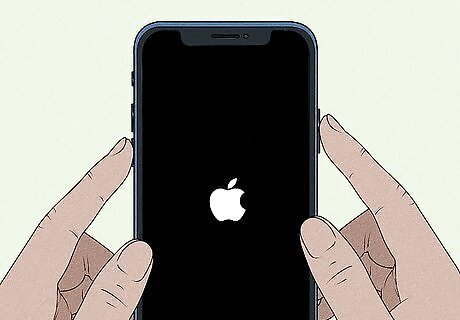
Restart your device. After updating the app, you can check to see if the app will play your music. If not, continue to restart your phone, tablet, or computer. Many people find that simply updating Spotify and restarting their phone, tablet, or computer is all they need to do to solve this error! Restarting your electronic device can fix many simple bugs and glitches that prevent Spotify from playing your songs.
Change Stream Quality

Open your Spotify Settings. Click or tap your profile photo, then select Settings. If you've canceled your Spotify Premium account and run into this error, this method will help you get rid of "Spotify Can't Play This Right Now." A free Spotify account doesn't have high-quality streaming available, but it might be the active setting in your player. This method works on the mobile app and desktop client.
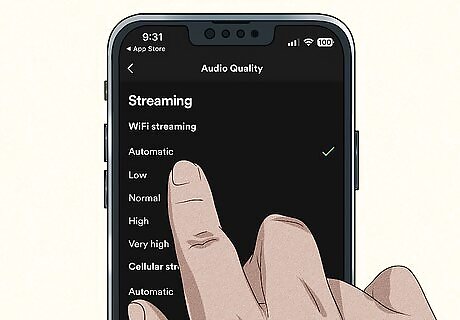
Select Automatic or a lower setting next to "Streaming quality". You'll find this under the "Audio quality" heading.
Troubleshoot Local Files (Premium)
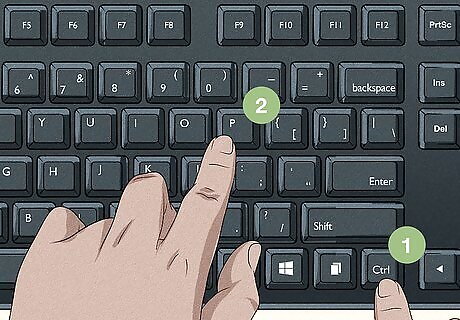
Open Spotify Settings. Sometimes Spotify glitches and can't identify where your imported songs are or read their file formats. Spotify only accepts music files in .mp3, .m4p, .mp4, and .m4a. The best way to remedy this is to refresh your local file settings. Click your profile picture and select Settings or press Ctrl + P.
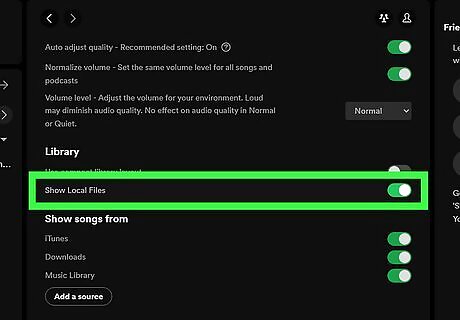
Click the toggle next to "Show Local files" to enable it Windows Switch On. If the switch is green and pointing right, your local files are displayed.

Click Add a source. It's under the "Show songs from" header and will allow you to refresh your imported song files.
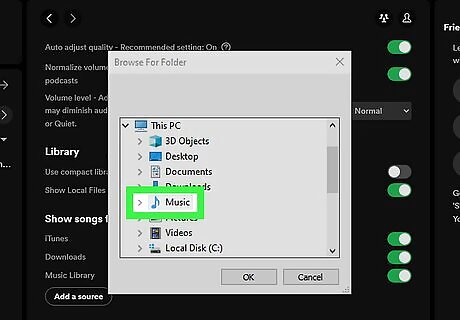
Navigate to the folder where your audio files are located. Using File Explorer or Finder, go to the folder where all the songs you previously imported to Spotify are. The original file destination could have been corrupted, causing an issue that prevents your songs from playing on Spotify.

Click OK. Once you've added the source, close and reopen Spotify to apply the changes. Try to listen to your music again to see if you are still getting the error. If you do, try the next methods.
Enable Protected Content (Spotify Web Player)
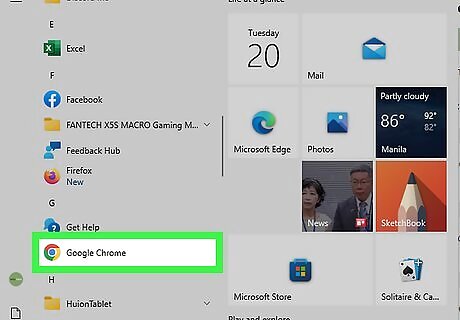
Open Chrome. Use this method only if you're running into this error when using the Spotify Web Player in Chrome. This method works for both Chrome on Windows and Mac.
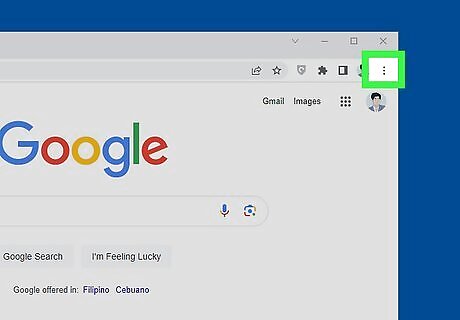
Click ⋮. You'll see this vertical three-dot menu icon in the top right corner of your browser.

Click Settings. It's near the bottom of the menu and will open a new tab.
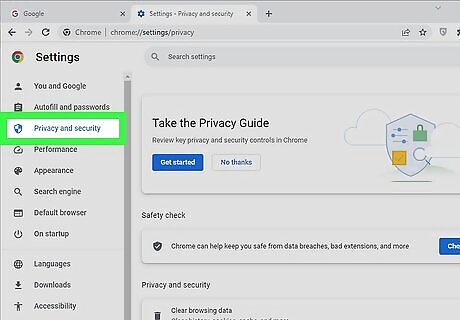
Click Privacy & security. This is in the menu on the left side of the page.
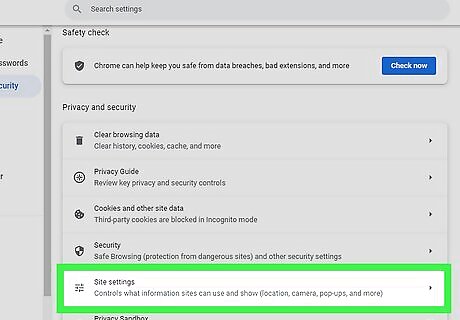
Click Site settings. It's next to a filter icon.
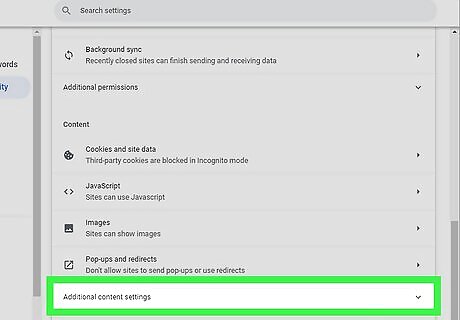
Click Additional content settings. You'll see this below the "Content" section near the bottom of the page. The menu will expand to show more options.
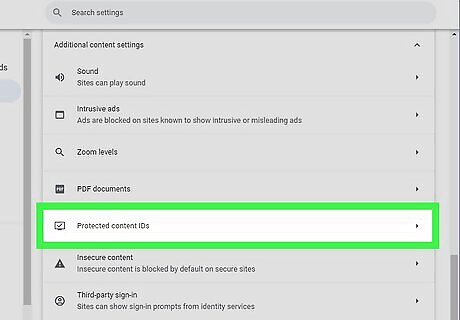
Click Protected content IDs. It's next to an icon of a checkmark inside a monitor.
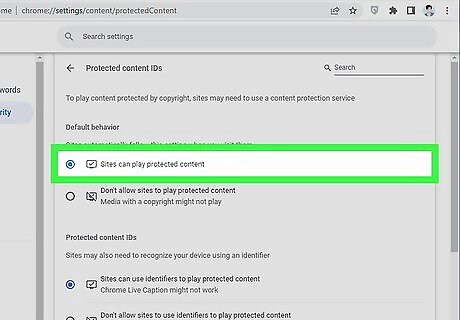
Select "Sites can play protected content" to fill in the circle. Once the right circle is filled in, close and re-launch Chrome to see if your changes worked for the Spotify Web Player.
Reset Crossfade on iOS & Android
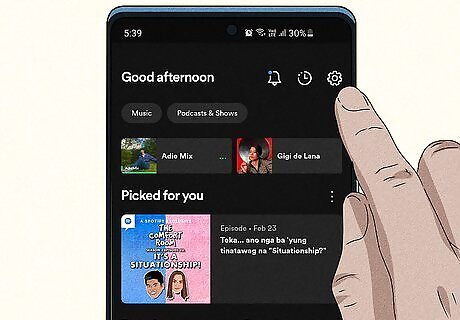
Tap Android 7 Settings. You'll see this gear icon in the top right corner of your screen, and it will open Settings. If you don't see this, tap Home first to ensure you aren't in a playlist. This method works for all Android and iOS devices using the mobile app, including smartphones and tablets.
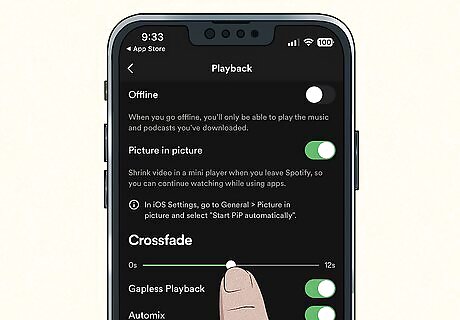
Drag the slider to adjust the crossfade. If you don't see the slider, tap Playback first. The more seconds you set for crossfade, the longer your songs will overlap. For example, if you set a 6-second crossfade, the last 6 seconds of a song will fade out as the next song starts to fade in. Are you noticing on your iPhone or iPad that your music stops playing when you open Facebook? You can stop this from happening using 7 different troubleshooting techniques!
Reset Crossfade on a Computer
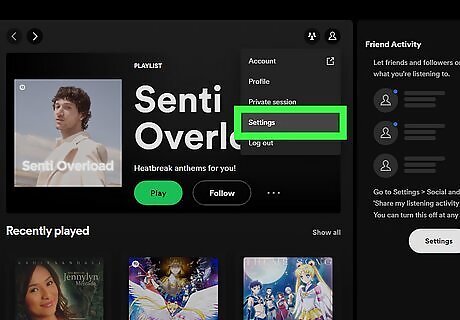
Click your profile picture and select Settings. Your profile picture is in the top right corner of the window and will drop down a menu. Settings is near the bottom of the menu. Use this method to reset your crossfade on the desktop app for Mac and Windows computers.
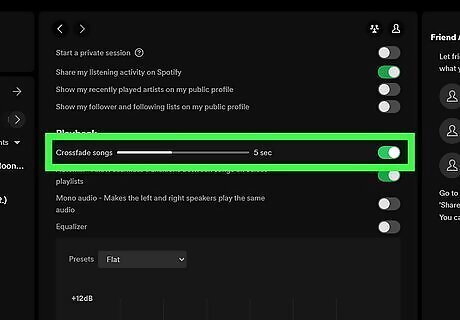
Click the switch next to "Crossfade Songs" to toggle it on Windows Switch On. You'll see a slider appear once you have crossfade enabled. If you don't see this under "Playback," click Show Advanced Settings.
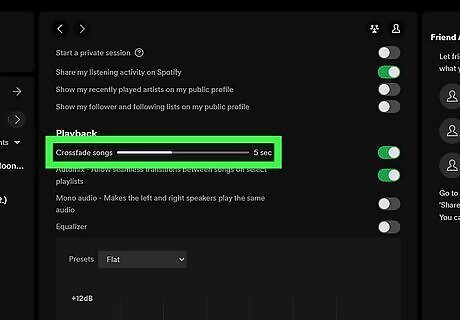
Drag the slider to adjust the crossfade. The more seconds you set for crossfade, the longer your songs will overlap. For example, if you set a 6-second crossfade, the last 6 seconds of a song will fade out as the next song starts to fade in. You can find playlists on Spotify that suggest that you have a specific crossfade to enjoy the music fully. To prevent Spotify from opening on startup with your Windows or Mac computer, follow these simple steps.
Uninstall & Reinstall Spotify

Uninstall Spotify. There are a few different ways to do this, depending on your platform: To uninstall Spotify on your Windows computer, press Win + I and click Apps. Find Spotify in the list and click Uninstall. To uninstall Spotify on your Mac, drag and drop the app icon to the Trash. To uninstall Spotify on your Android, iPhone, or iPad, tap and hold the icon then tap Delete or Uninstall. Before uninstalling, check out how much you've listened to Spotify! The results can be shocking.
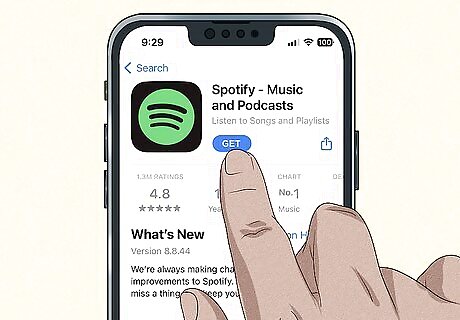
Reinstall Spotify. Go to the Spotify site and download the installer again, or redownload the app from the App Store or Play Store.


















Comments
0 comment